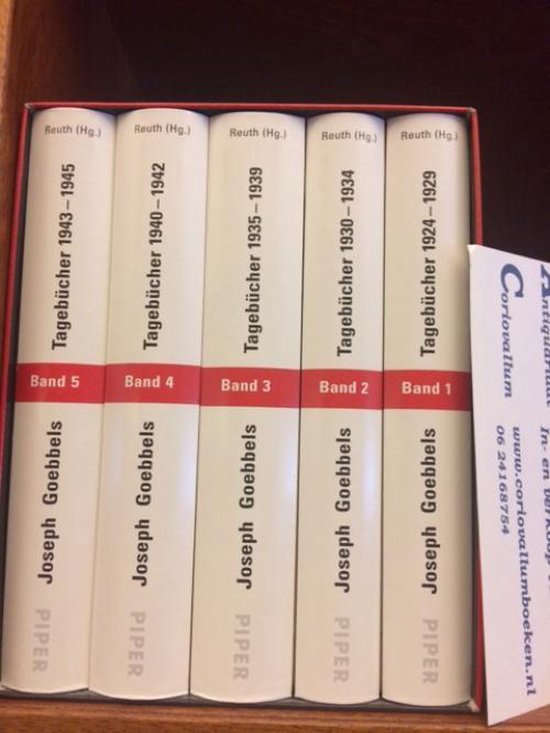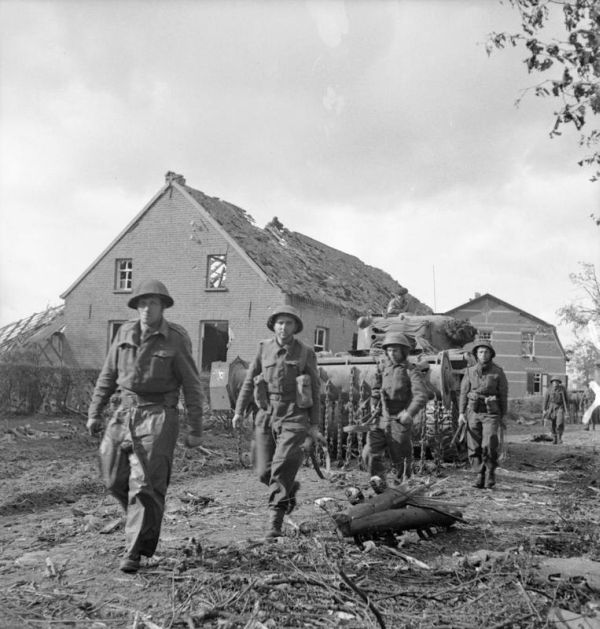Traces of War Overloon: 14. English Cemetery 1946
In the village of Overloon, a route has been set out with fifteen signs. It provides a picture of what happened in the village at fifteen different locations in the village. The route is called: "Traces of the war" and was made possible by the War Museum Overloon.
The Battle of Overloon from September 26 to October 14, 1944
For more than four years, the Second World War had more or less passed Overloon. But on September 26, 1944, the front reached this village in De Peel. The narrow strip of land liberated between Eindhoven and Arnhem during Operation Market Garden was slowly but surely widened. The advance of the Allied army went well up to Overloon. There the Germans had dug in to stop the enemy. On September 30, the Allies launched the attack with the US 7th Armored Division. After 9 days of very fierce fighting, the exhausted Americans withdrew and were relieved by British army units commanded by Major General L.C. Whistler. After a few days of relative rest, in which heavy rainfall had turned Overloon into one big mud pool, all hell broke loose on October 12 at 11 a.m. For an hour and a half the Allies bombarded the German positions with heavy artillery and air raids. More than 100,000 grenades flew around the Germans. When the village was completely in ruins, the advance of the British began. House by house was taken at the cost of huge losses. Fierce man-to-man fights also took place in the woods. On October 14, at four in the afternoon, the last stronghold, the church, fell in the village of Overloon. The Germans still present were taken prisoner. Overloon was left as a completely destroyed village.
14. English Cemetery 1946
October 14 is the day on which the fallen soldiers are commemorated in the English cemetery in Overloon. This is currently done once every five years. The English gave their fallen soldiers a final resting place in the immediate vicinity of the battlefield where they sacrificed their lives for our freedom. In 1953, the crosses that mark the graves here were replaced by stone tombstones. The graves were adopted by the Overloonse population, which meant, among other things, that they corresponded with the relatives and that their visit to Overloon was provided with shelter. This cemetery contains 280 war dead: 279 British, including 265 soldiers and 14 airmen, and one Dutchman: Wilhelm Verburgt. He is buried in Plot IV, Row D, Grave 13.
Do you have more information about this location? Inform us!
Source
- Text: TracesOfWar.nl
- Photos: TracesOfWar.nl
- Oorlogsmuseum Overloon
Related books
Nearby
Museum
Point of interest
- Information boards Facing Freedom Overloon - Overloon
- 0.5 km
- Information Sign Aircraft Crashes and Emergency Landings WW2 in Boxmeer Municipality - Overloon
- 0.5 km
- Wehrmacht Cottage Venray - Venray
- 2.9 km
Monument
- Memorial Unbroken Resistance - Overloon
- 0.4 km
- Monument Dodendans - Overloon
- 0.4 km
- Monument Sta een ogenblik stil - Overloon
- 0.4 km
Cemetery
- Commonwealth War Cemetery Overloon - Overloon
- 0.0 km
- Dutch War Graves Venray - Venray
- 4.3 km
- Commonwealth War Cemetery Venray - Venray
- 4.9 km
Fortification
- Peel-Raamstelling - S-kazemat - Ysselsteyn
- 10.1 km
- Peel-Raamstelling - S-kazemat - Ysselsteyn
- 10.3 km
- Peel-Raamstelling - S-kazemat - Deurne
- 10.4 km






